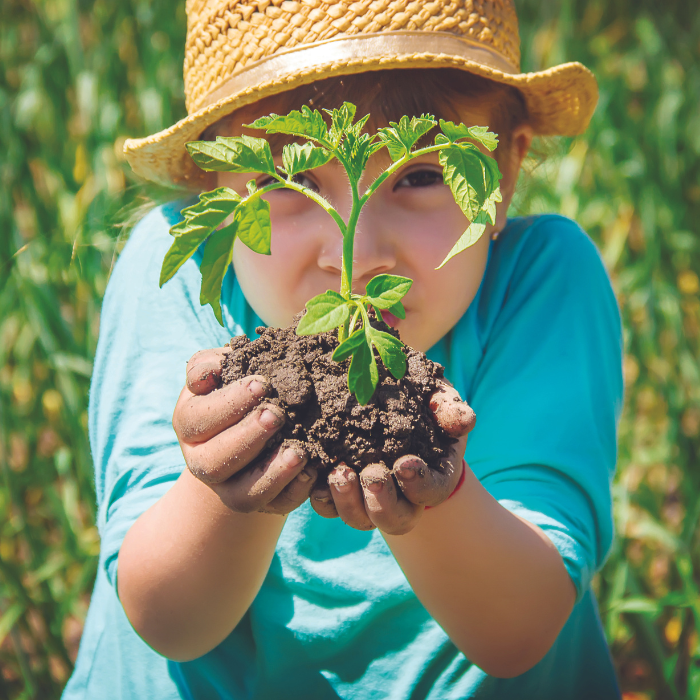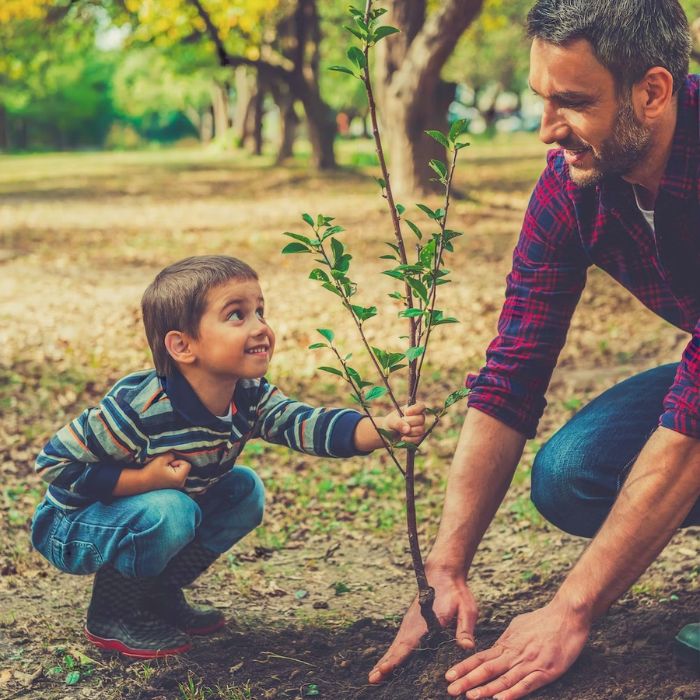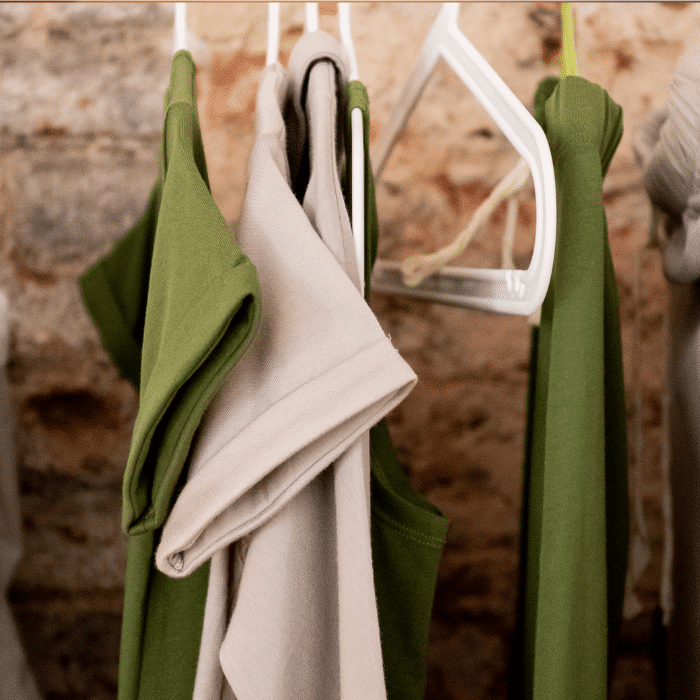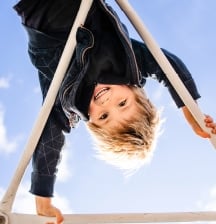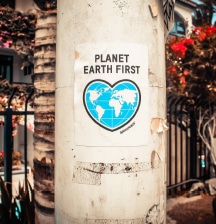
With a little forethought and a few minor adjustments to our households, there are many ways we can have less of a harmful impact on our environment, at the same time as setting a great example for our children to follow in the future.
1) USE ECO-FRIENDLY PRODUCTS
Have you thought about what you are using to clean your home and your clothes? It’s time to get out your cleaning products and take a look. You may find some that don’t even say what’s in them. Some could contain ingredients that are irritants, toxic, flammable, corrosive and chemically reactive.
We fear dirt and grime and when we find something that works, we are reluctant to try other things. The good news is that many of the certified eco-friendly products work too. There is an increasing variety on the market containing natural and plant-based ingredients. These can include coconut, palm oil, sugar, baking soda and essential oils.
Look for products with the ‘green tick’. The ‘green tick’ means it has been independently certified as being environmentally sustainable. You may also come across the ‘environmental choice label’. This means the product meets specific criteria to ensure that it is ‘environmentally preferable’. It is a global standard endorsed by the New Zealand Government.
We should also remember natural cleaning solutions. Baking soda is good for scouring and also for soaking your cloth nappies in. Vegetable oil is a good furniture polish. Salt is good for soaking dirty pans in and for scum in sinks and showers. Lemon juice, tea tree oil and white vinegar can also clean and deodorise. You could also try the micro fibre cleaning cloths which are designed to be used without any cleaning products.
2) BRING THE WILDLIFE BACK TO YOUR GARDEN
According the Department of Conservation, the Auckland region has at least 170 threatened native plants. They also state that 80% of New Zealand’s trees, ferns and flowering plants are unique to New Zealand. So by growing native plants, you will be helping to preserve our distinctive wildlife. This is just one of the good reasons to teach your children about native plants.
There are other reasons too. Firstly being native, the plants are adapted to our conditions which should mean they need less care and are more likely to grow in our gardens. Local councils and garden centres can often provide good advice on what will grow well locally. Secondly, native plants help attract native birds and insects too. Most children love nothing better than watching birds and insects at close range. Some ideas for attracting them to your garden include planting trees and hedges that provide nesting places for birds and places for insects to hide. Plants that produce edible berries, seeds, flowers and nectar also attract birds. For example, the Tui likes to feed on sweet nectar and so is attracted to Rata and Pohutukawa trees in summer, to Totara and Kahikatea trees in autumn, to Puriri trees in winter and Kowhai trees in spring. You can also help by making bird feeders. The Tui likes a mixture of one cup of water with 3dsp of sugar and 2tsp of vanilla complan.
If you decide to be more proactive in attracting native wildlife to your garden, check The Department of Conservation’s website for a list of the names of suitable plants.
3) GIVE CLOTH NAPPIES A GO… AT LEAST SOMETIMES
The facts on what disposable nappies mean for our environment are pretty unpleasant. The energy required to produce one disposable nappy is the same as the energy required to wash a cloth nappy 200 times. Nappies sitting in landfills can take up to 500 years to breakdown. Two tonnes of waste is produced by just one disposable-wearing baby! Aside from all this, in the long term, using cloth nappies works out to be significantly cheaper. Cloth nappies come with an impressive range of options and biodegradable liners can also be used to make dealing with number twos easier! Some parents use cloth nappies 100% of the time, and others are choosing to combine them with the use of disposables when they are out. Remember to consider reusable options for swimming too.
4) ECO PARTY
Children’s parties often mean lots of plastic party bags, plates and cups. Plus balloons, decorations, plastic party prizes and party bag fillers. At the end of it, a lot of this stuff ends up in our bins, sent off to sit in landfills – parties can be a real hazard for the environment!
Consider how you can still give your children parties without harming the environment. Think about getting biodegradable balloons, using recyclable paper and fresh flowers to decorate. What about using 100% biodegradable plates, bowls and cutlery made from potato starch or sugar cane? Sounds odd, but they come in a range of bright, appealing colours and are even safe to take a bite out of or feed to the ducks. (See box for NZ websites.)
When it comes to prizes, think books, wooden toys or other things that are going to be useful long-term rather than two minute wonders. Party bags can be made from paper, or use biodegradable bowls. For a uniquely NZ flavour, you could even buy little flax kete for party bags and glue pieces of shell onto the front of each bag.
Party bag fillers could include things like novelty cookies, mini gardening gloves, sunflower seeds, biodegradable soaps and little wooden treasures like yo-yos, the cup and ball or cars. When buying party food, remember to look out for food not packaged in lots of plastic – however, home made treats and fruits are best of all.
5) REMEMBER GOOD OLD WOODEN TOYS
There are certainly some tough plastic toys around that will give our children years of enjoyment, but there is also loads of the cheap, weak sort that just end up in the bin. As with anything plastic, these toys will sit in our landfills for years after we have finished with them. As long as the wood hasn’t come from ancient forests, wooden toys are a good environmental option. They tend to be solid and last for years. There are options galore and they are increasingly easier to come by. Cars, trucks, trains, planes, playhouses, doll’s furniture, the great walker wagon, blocks, puzzles, games, educational products and children’s furniture. Wooden options are also great for parents wanting to embark on DIY gifts. Alternatively, you might want to consider cutting back on toys altogether. Do your children really need so many toys? Consider giving experiences like horse riding or activities like art classes for gifts sometimes instead.
6) USE PUBLIC TRANSPORT MORE OFTEN
Most of us use our cars to go everywhere, including just up the road. We are often time-pressured and it is much more of an effort to take a bus, but even if we do so only occasionally, we will still be helping the environment.
Following the government’s directive on improving the level of vehicle emissions, we are advised to purchase modern cars, use the appropriate fuel, drive efficiently and maintain our cars with regular servicing.
If you have the option of using public transport in your area, consider using as much public transport as you can, for example, during the school holidays with the kids. They might even enjoy the challenge of seeing whether they can use the train, bus and ferry all in one day.
Interesting websites
www.potatoplates.com (biodegradable packaging)
www.petespackaging.co.nz (biodegradable packaging)
www.earthangel.co.nz (biodegradable packaging)
www.wastedtv.co.nz
www.reducerubbish.govt.nz
www.greentick.com
www.smarterhomes.org.nz
www.forestandbird.org.nz
www.doc.govt.nz (Department of Conservation)
What about using 100% biodegradable plates, bowls and cutlery made from potato starch or sugar cane? Sounds odd, but they come in a range of bright, appealing colours and are even safe to take a bite out of or feed to the ducks.
By Olivia Murton



